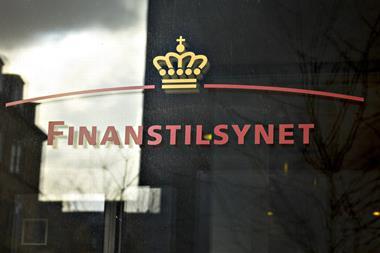Historically speaking, market volume in the venture capital funds is at a very high level. At the end of 2001, German venture capital companies reported a fund volume of E28.5bn – or 50% more than one year earlier.1
However, new investment is dropping significantly. In the private equity sector, we expect the volume to decline by more than 30% in 2002, to roughly E3bn.
Since the decline of Germany’s Neuer Markt, practically no firm has used an initial public offering (IPO) as exit vehicle. Only one company has been floated on the Markt in 2002.
Stock markets play a central role in an analysis of the VC market crisis. Even though the IPO is only one of several divestment avenues for VC stakes and was never the dominant route in Germany even at the zenith of the Neuer Markt, it bears special significance in terms of quality.
The companies which are particularly successful with IPOs compensate the high failure rates which are typical of a VC portfolio. Without a few extremely profitable holdings it is hardly possible to achieve the average returns investors demand.
VC companies can build up their reputation if the IPOs they stage are repeatedly successful. This way, they signal competence to investors and can use their reputation to negotiate better conditions when seeking to raise further capital.
The bookbuilding procedure before an IPO and the market price of already listed companies may function as benchmark for a company’s valuation. This is helpful not only for company flotations, but also for trade sales and buybacks. This transparency generally raises pricing efficiency in the VC market.
Empirical evidence also suggests that a functioning IPO market is a crucial determinant for VC markets. In countries with established VC markets there is a clear correlation between share price performance in the equity markets and the number of VC-financed companies that go public.
Before the crisis hit, the German VC market underwent a spectacular upswing. Growth was moderate in the first half of the 1990s, and then 1997 marked a structural break: between 1997 and 2000 in particular, fund raising, investment and the number of IPOs increased at annual rates that went into double and triple-digit figures.
There were three main reasons for the upswing:
o First and foremost, the Neuer Markt established a liquid growth market for young hightech companies, which generated very high returns for their investors via the IPOs. However, the development of the speculative bubble in the Neuer Markt gave rise to overheating in the VC sector. Over 50% of the VC firms in the market were set up after 1997.
o Second, the pronounced danger of young companies failing was considerably reduced, from the investor’s viewpoint, by state-funded promotion schemes and risk assumption (the “Beteiligungskapital für kleine Technologieunternehmen“ (BTU) programme in particular). At almost the same time as the higher returns on VC stakes beckoned, the degree of risk considerably decreased, making investment more attractive.
o Third, the technology euphoria in the second half of the 1990s sparked a start-up boom in the hightech sector which triggered a surge in demand for VC. Information and communications technology and the belief in new economic laws generated a multitude of business ideas (many of which in retrospect proved unrealistic).
The crisis in the German VC market was touched off by the bursting of the hightech bubble in the Neuer Markt. The dimensions of the crash are unmatched in history.
In March 2000, the Nemax All Share index stood at over 9000 points. It has since fallen to about 400, down roughly 95% from the all-time high.
The market capitalisation of Neuer Markt stocks has shrunk from around E210bn in March 2000 to about E10.5bn at present, meaning capital destruction of roughly E200bn.
The number of listed companies has fallen from a peak of 340 to 240.
This has meant the death sentence for the “Neuer Markt” brand. But the damage to its image (apart from the monetary losses) affects not only shareholder confidence, but also the attractiveness of current and potential company listings. Of the 66 companies which have delisted from the Neuer Markt in 2002, 52 have done so voluntarily and switched to another segment. Only 14 have been expelled.
At the same time, state promotion schemes have been cut back considerably. In 2000, approval was given to 1,034 projects worth E600m in the framework of the BTU programme. In 2002, the number of commitments has fallen to an estimated 214, with the total volume down to only E70 m or so. The BTU programme was terminated at the end of 2002.
As long as the channel to divestment by IPO is blocked, trade sales and buybacks of passive holdings will be the most important exits. However, they will be exceeded by the share of failures. Consequently, returns will shrink. Some of the VC companies which benefited from the bubble of the late 1990s will bow out of the market. Nevertheless, the market is expected to return to “normal standards”, especially as regards investment amortisation periods.
As a divestment outlet, the stock market is a promising adjustment tool for reducing the investment backlog in the German VC sector, since a functioning VC market needs lucrative exit possibilities. In this connection, the reorganisation of the market segments underway at Deutsche Börse has to be judged from two different angles. The fact that the Neuer Markt will be closed down at the end of this year is the formal consequence of the market’s longstanding negative assessment. In this respect, the step is not expected to have any further unfavourable effects on the VC sector.
That said, the new General Standard segment (besides the TecDAX in Prime Standard) will scarcely prove to be a driving force in attracting masses of new companies. Deutsche Börse’s reforms have been too insignificant to offset the damage to the market’s image as seen through the eyes of small investors and institutional players. Regaining their confidence would be necessary, though, to create a sufficiently liquid hightech and growth-stock segment at national level which would heighten the attractiveness of IPOs. However, it might instead be possible to realise economies of scale by bundling the liquidity of several European growth markets. This could help lower the high costs of cross-border settlement, which currently run to as much as 10 times the domestic level. The long-term alternative to “national re-labelling” of the Neuer Markt should therefore be to make a determined new start with a growth market of European dimensions. This requires that common standards be found for listing and for custody institutions, and that technological difficulties – particularly those posed by different IT platforms – be overcome. But national sensitivities in particular raise obstacles on this path towards a new beginning.
1 National VC-figures for Q4 2002 were not available at time of writing.












No comments yet